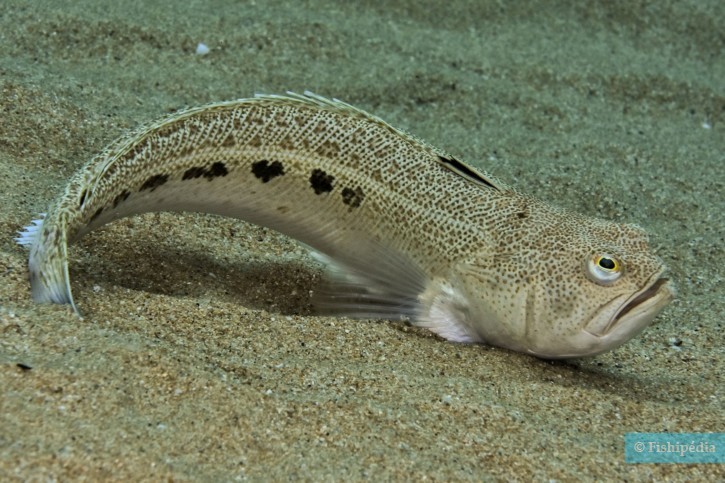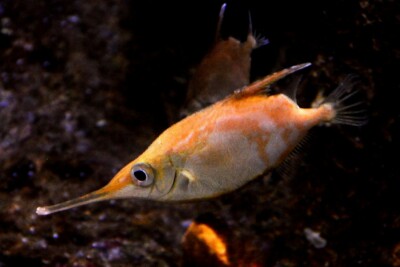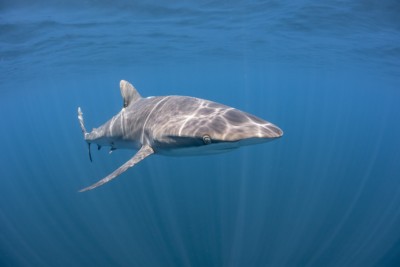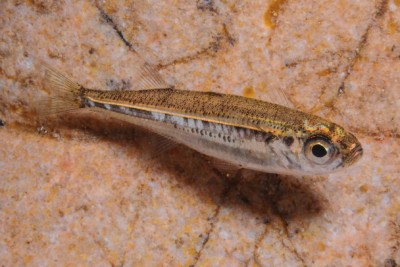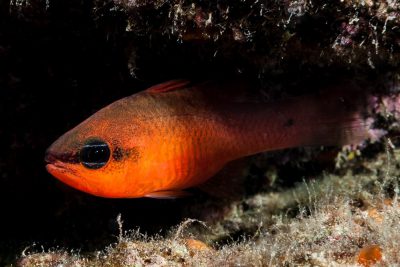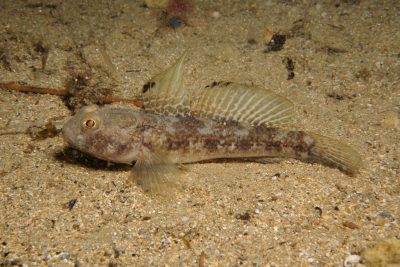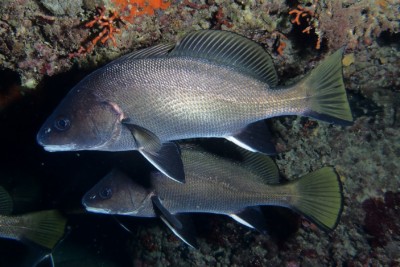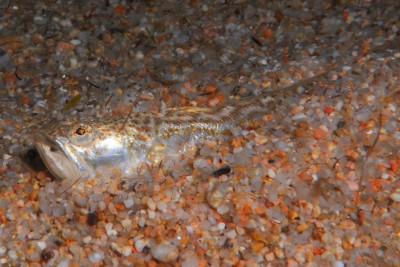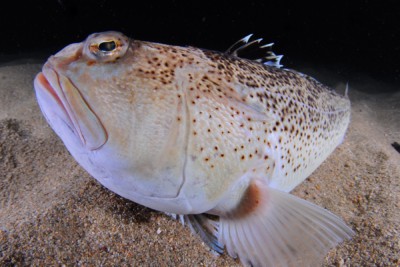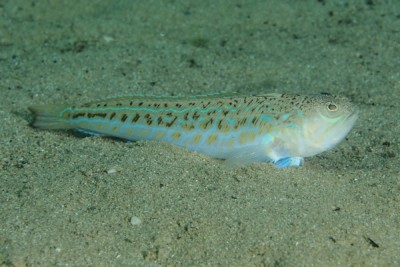spotted weever
| Scientific name | Trachinus araneus |
|---|---|
| Descriptor | Cuvier |
| Year of description | 1829 |
| IUCN category (World) | LC |
| Family | Trachinidae |
| Genus | Trachinus |
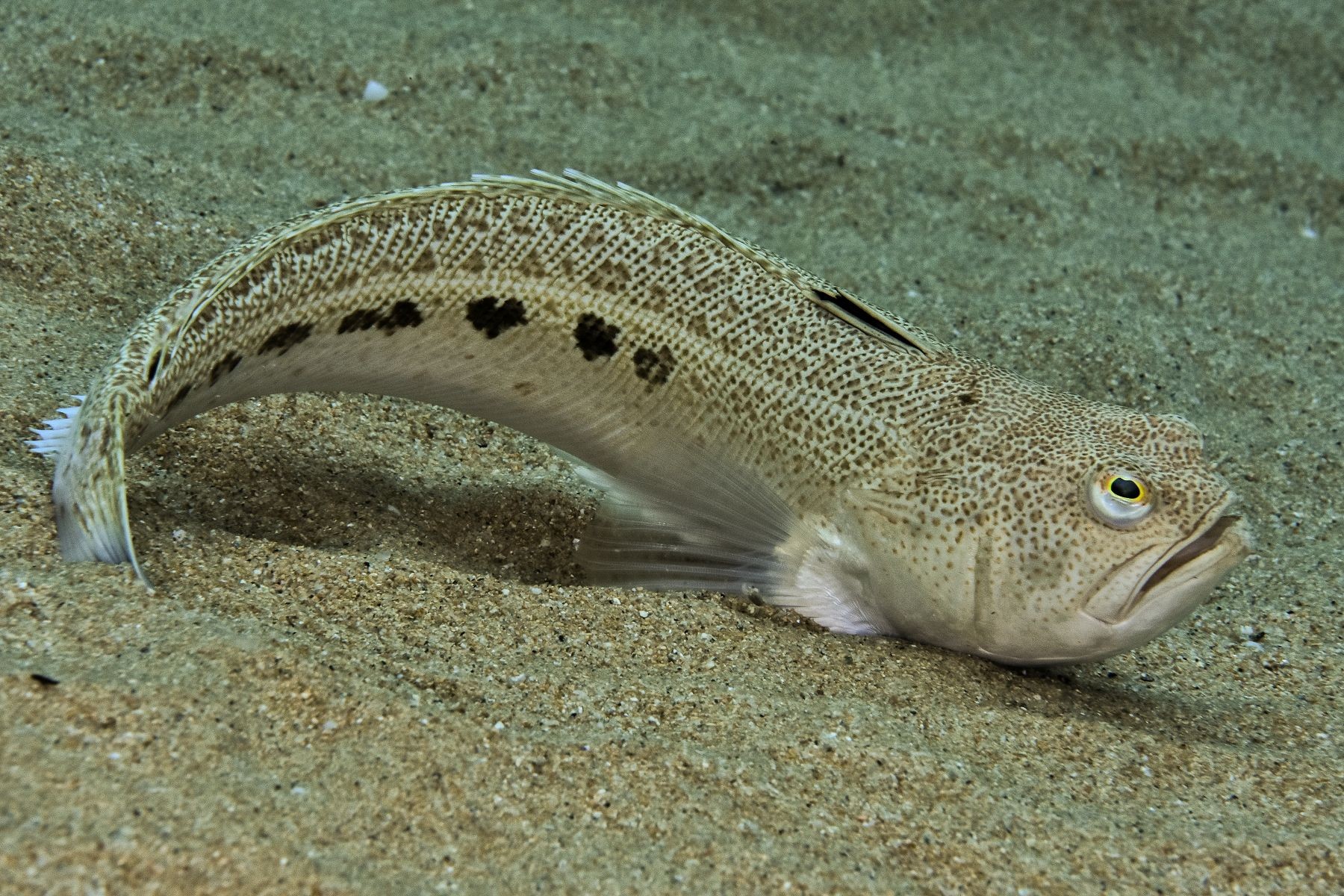

Introduction
The spotted weever is perhaps the most dangerous of all known weever species. It frequents the coasts of the Eastern Atlantic and the Mediterranean Sea.
Unlike other weever species that tend to swim away or react when surprised, this species is known to attack intruders who approach its territory. Divers have reported attacks in open water by large individuals (40 cm) and even the pursuit of diving groups. In case of encounter, it is advised to quickly move away from the territory of this species, and to stay vigilant if the fish raises its dorsal fin. The attack is almost instantaneous, as this fish performs rapid leaps to reach its targets.
As with its relatives, the sting is dangerous and very painful. It quickly leads to tissue necrosis in the affected area.
This species is less common than the greater weever (T. draco) or the lesser weever.
Who is it?
Morphology
-
Average size30 cm
-
Maximum size45 cm
-
Longevity16 year
-
Mimicrysand
-
Patterntasks
-
Average size30 cm
-
Maximum size45 cm
-
Longevity16 year
-
Mimicrysand
-
Patterntasks
How to recognize This fish ?
The largest individuals reach 45 cm, but most observed adults measure around 30 cm. Like the greater weever, the body is highly elongated, the snout is short, and the mouth is wide. The eyes are more spaced out than in other weever species.
The lateral sides are beige to brown. A line of coarse dark spots of medium size is present on the lower part, the rest of the body is punctuated with small irregular spots. Like the leopard weever, the first dorsal fin is black. As with its relatives, a venomous spine is present at the operculum level. The first dorsal fin has 7 venomous spiny rays, the second fin is long and composed of 26 to 29 soft rays.
Apart from the body coloration, this species can be distinguished from other weever species by its arched back and the first dorsal fin being triangular and short. The spotted weever is often confused with the lesser weever (E. vipera) and the leopard weever (T. radiatus).
Sexual dimorphism
There are few distinguishing elements between males and females.
Behaviour & Life cycle
-
dietcarnivorous
-
Sociabilitysolitary
-
territorialYes
-
Way of livingdiurnal
Like other weever species, this fish is a predator that spends its time buried in the sand, ready to leap at passing prey. Only the top of the head and the venomous dorsal spines protrude from the sand.
This species feeds on crustaceans and small fish living in sandy areas. Little information exists about its lifestyle. It is assumed that its activity is mainly nocturnal, similar to the greater weever.
Reproduction
-
Reproductionovipare qui pond en eau libre
This species is oviparous. It migrates to the shallowest coastal zones for reproduction, which takes place in spring and summer, the exact period depending on the regions.
Life-threatening species
-
VenomousYes
This species is highly venomous and can cause serious accidents upon contact. Bold and aggressive, it doesn't hesitate to attack bathers and divers who approach its territory. It is one of the most dangerous small species in the Mediterranean Sea.
What to do in the event of a sting?
in case of sting, the following rules should be followed, in this order:
- Isolate the victim from the danger and quickly remove him or her from the water
- Call for help
- Lay the victim down in a half-sitting position and avoid any effort
- Immobilize the affected limb
- Clean the wound
- The venom of this species being thermolabile, it can be neutralized if it is submitted to a temperature of about 45 °C. It is therefore possible to heat the wound. This popular technique should be practiced with great care so as not to aggravate the wound by burning it. It is advisable to immerse the affected limb in hot water.
- If the puncture is too deep, heating the wound will be less effective.
Sometimes the sting can cause discomfort or even loss of consciousness in the victim. The stings are usually very painful.
Origin and distribution
Conservation status of populations (IUCN)
What is its habitat?
Natural environment characteristics
-
Depth1 - 100 m
Biotope presentation
This fish frequents sandy areas in coastal waters.
Species of the same biotope
To go further
Sources & Contributions
Participation & Validation
The Fishipedia team and specialist contributors are committed to providing high-quality content. However, although the information comes from scientific sources or testimonials from specialists, the cards may contain inaccuracies.

Benoit Chartrer

Julie Magnus
Translation
Translation done with the valuable contribution of our translators, who make this information available to a wider audience. We sincerely thank them for their commitment.
Scientific partners
Tags
Species of the same family
Same genus
Species of the same biotope
